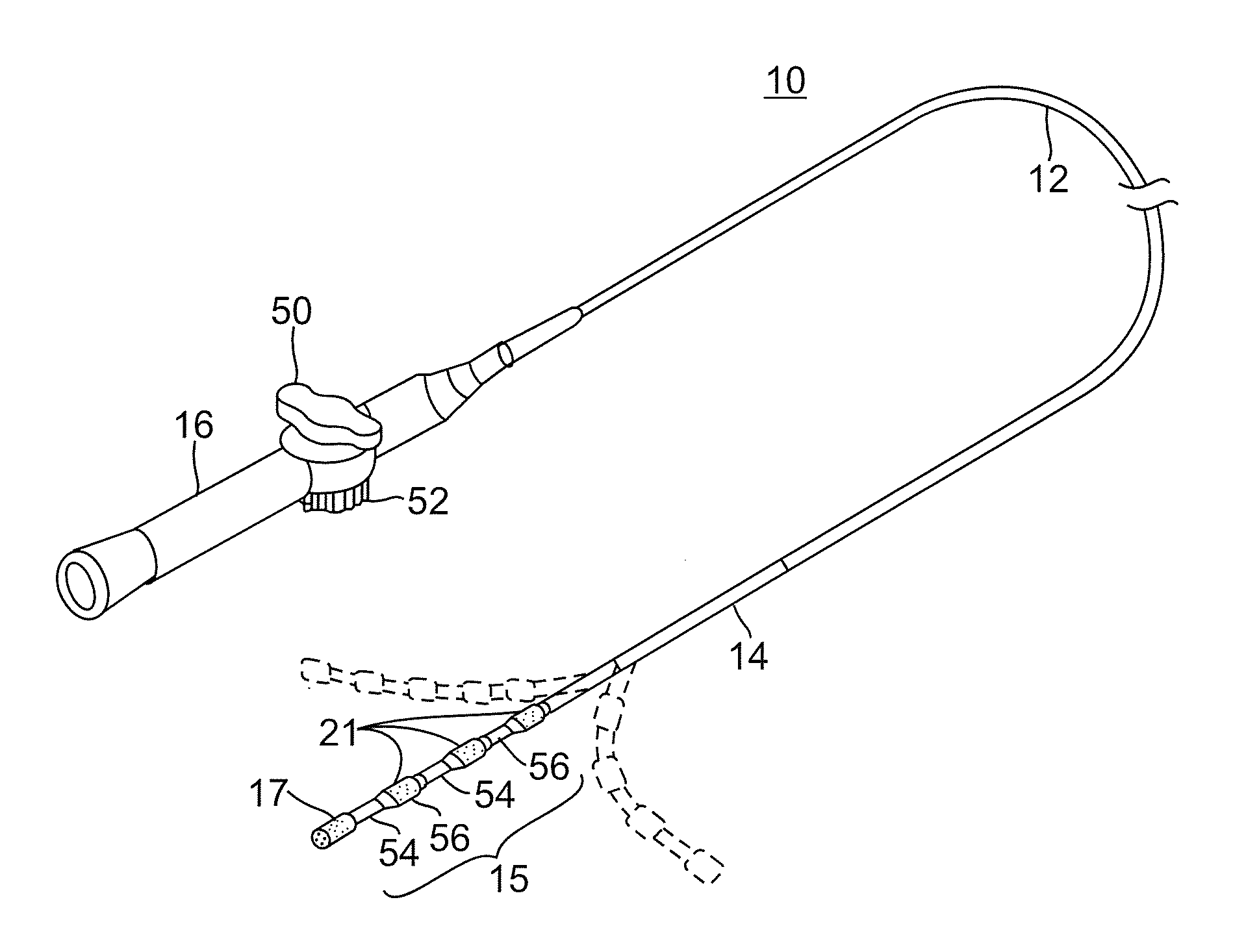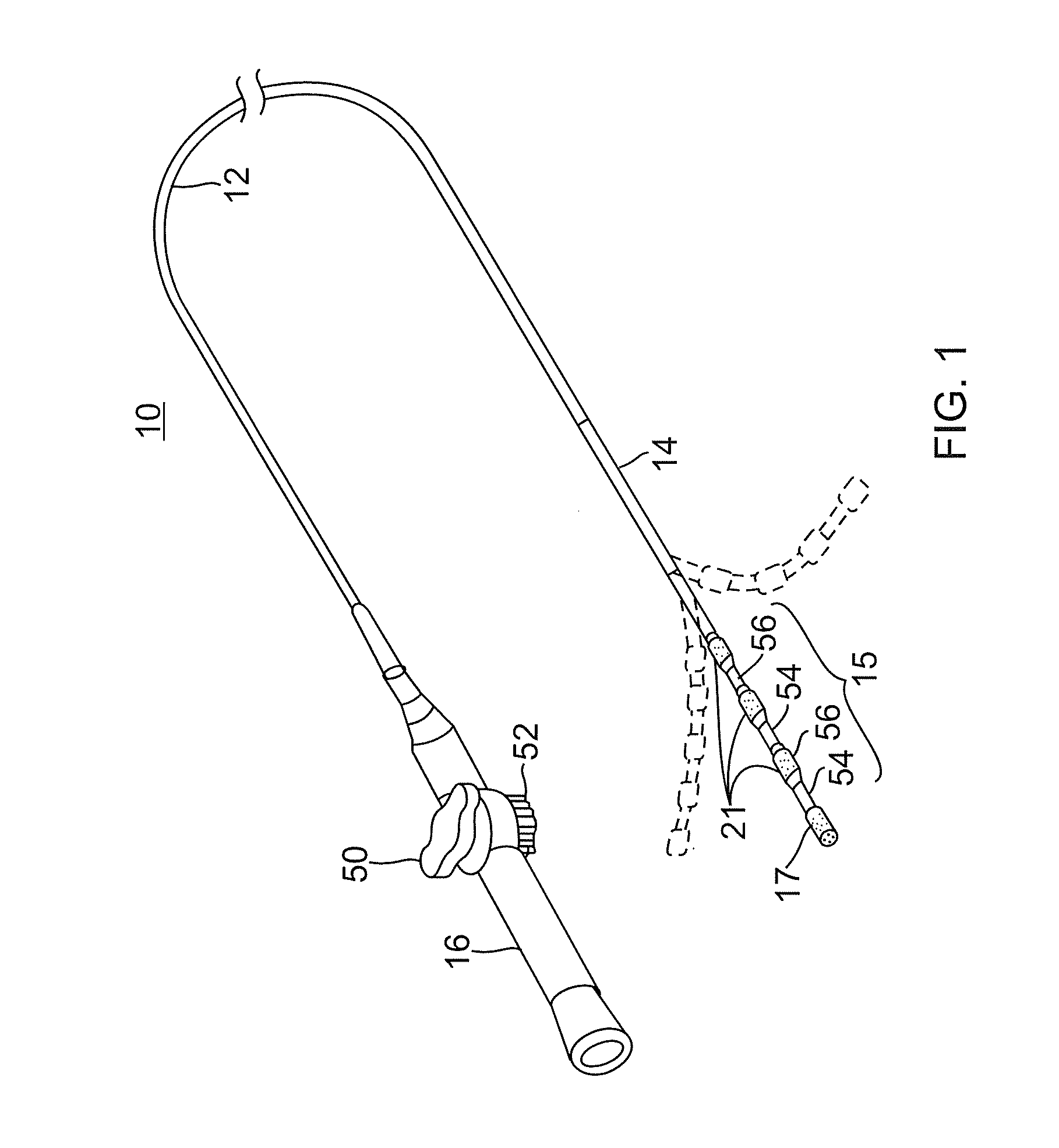Catheter with composite construction
a composite construction and catheter technology, applied in the field of electrophysiologic catheters, can solve the problems of reducing the accuracy of the position sensing capabilities of the sensor, limiting the flexibility and deflection of the distal tip section, and forming a lesion within the cardiac tissue which is electrically non-conductive, so as to achieve less space, increase the size of the catheter, and improve the effect of us
- Summary
- Abstract
- Description
- Claims
- Application Information
AI Technical Summary
Benefits of technology
Problems solved by technology
Method used
Image
Examples
Embodiment Construction
[0035]FIG. 1 illustrates an embodiment of a catheter 10 carrying irrigated tip and ring electrodes with location sensing and cooling capabilities. The catheter has an elongated catheter body 12 with proximal and distal ends, an intermediate deflectable section 14 at the distal end of the catheter body 12, and a distal section 15 with an irrigated tip electrode 17 and a plurality of irrigated ring electrodes 21. The catheter also includes a control handle 16 at the proximal end of the catheter body 12 for controlling deflection of the intermediate section 14. Advantageously, the distal section 15 has a composite and segmented construction comprising alternating segments of deflectable lumen members 54 and ring electrode support members 56. The construction facilitates the efficient use of space in the distal section 15 as the construction allows all the lumens in the distal section to be used for components other than position sensing coils which otherwise tend to require dedicated a...
PUM
 Login to View More
Login to View More Abstract
Description
Claims
Application Information
 Login to View More
Login to View More - R&D
- Intellectual Property
- Life Sciences
- Materials
- Tech Scout
- Unparalleled Data Quality
- Higher Quality Content
- 60% Fewer Hallucinations
Browse by: Latest US Patents, China's latest patents, Technical Efficacy Thesaurus, Application Domain, Technology Topic, Popular Technical Reports.
© 2025 PatSnap. All rights reserved.Legal|Privacy policy|Modern Slavery Act Transparency Statement|Sitemap|About US| Contact US: help@patsnap.com



